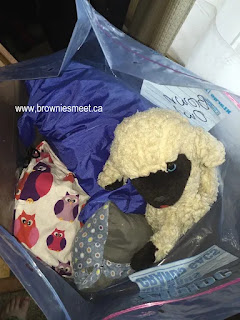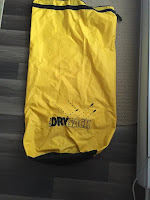Campers need a place to sleep that is dry and comfortable. The gear in this list is all the same, but there are a few different ways to make sure it stays dry. Let's talk about the gear first.
Gear you need:
- Base/water barrier layer that will go on the tent floor - between you and the ground. I suggest a tarp or a quality shower curtain. I like the shower curtain option because it is durable and quiet. Tarps are noisy.
- An insulating mattress that is comfy enough to sleep on but also small enough for the camper to carry it.
- Go with a Thermarest, some foam, or a yoga mat.
- Do not choose an inflatable air mattress as the volume of air inside the mattress is not insulated at all. Coldest night ever! (Unless you have an expensive air mattress specifically built for cold temperatures, leave your air mattress at home).
- An appropriate sleeping bag for the temperature at camp.
Choose a good temperature rated sleeping bag and supplement it with a wool blanket or a warm bag liner.
Logo sleeping bags are NOT warm enough for camp - leave the Spiderman sleeping bag for a sleepover.
If you're struggling with this one, ask for help. Your Guiders, neighbours and friends probably have camping gear you can borrow.
Another option is to make a sleeping bag out of wool blankets and a comforter. - A blanket - wool or polar fleece.
- A pillow - go with something packable.
- An optional sleeping buddy
Sleeping buddies that come to camp should be your second-best. Consider how you'd feel if your buddy got lost or damaged - bring one you like but could handle losing.
Also, sleeping buddies should not be bigger than your head. - Sometimes campers tuck their PJs in their bedroll too. This is optional.
Methods to waterproof your bedroll
Now that we know what we're brining to camp, there are lots of ways to make it waterproof.
Traditional Bedroll
The traditional bedroll looks like a tarp burrito. We usually put things in the bedroll in the order that they are needed. When you unroll your bedroll at camp, all you'll need to do is unwrap it and go to bed.
Extra supplies: add a length of rope that is long enough to tie around your bedroll a few times (3M).
- Girl Guides of Canada Guiding Traditions blog has a great video about How to tie a bedroll.
- Check out how a Girl Guide in Australia makes a bedroll.
Stuff sack with a heavy duty plastic bag liner
Extra supplies: stuff sack and a heavy duty plastic bag. Your stuff sack might get wet or muddy, but the plastic liner will keep the contents dry.
From Girl Guide Adventures: If you are using a foam pad, make it into a tube with a 50cm hole in the middle. Wrap a plastic bag and the stuff sack around that. Put your sleeping bag, pillow, blanket and stuffy inside the tube. Twist the bag closed and stuff the end down the side - or seal it if you've got a giant zip bag). Then seal off the sack.
These images are from an indoor camp where we didn't need to bring sleeping mats.
Dry Sack
Extra supplies: a large dry sack like a Coughlan's Dry Sack from Canadian Tire (about $25).
This is the most expensive option. But if you've already got a stuff sack, these are a good option for Girl Guide Camp.
This is the most expensive option. But if you've already got a stuff sack, these are a good option for Girl Guide Camp.
Pack this following the instructions of your dry bag - in the same method as the Stuff Sack above.
Happy Camping!




Comments
Post a Comment